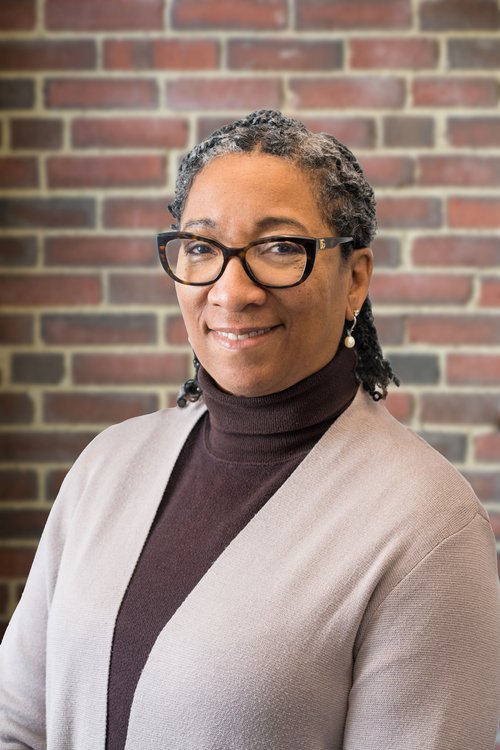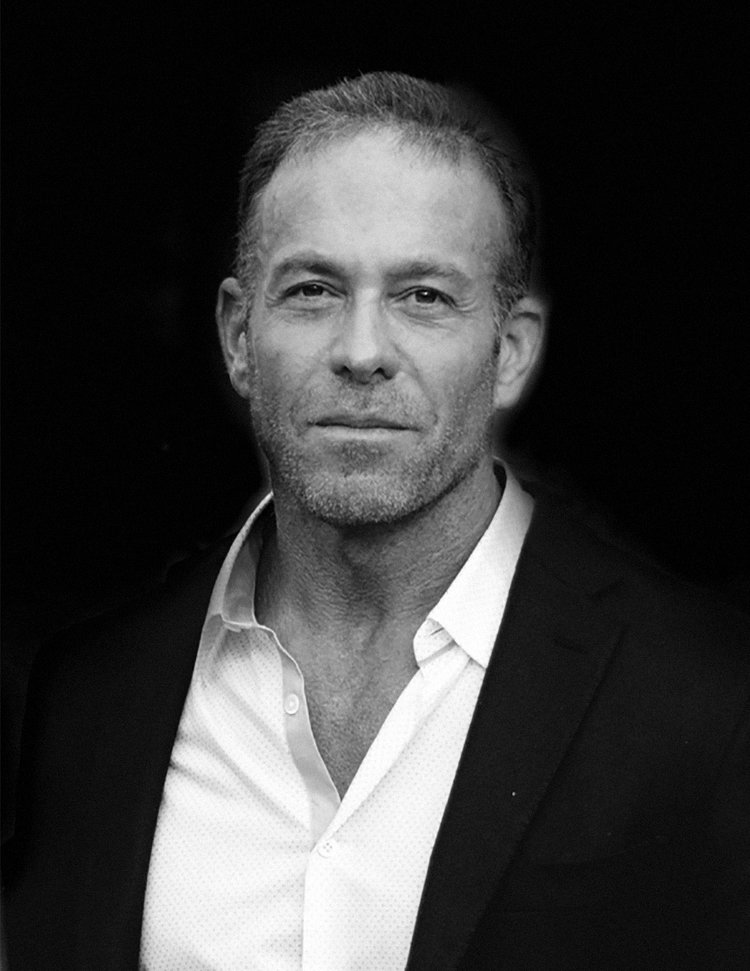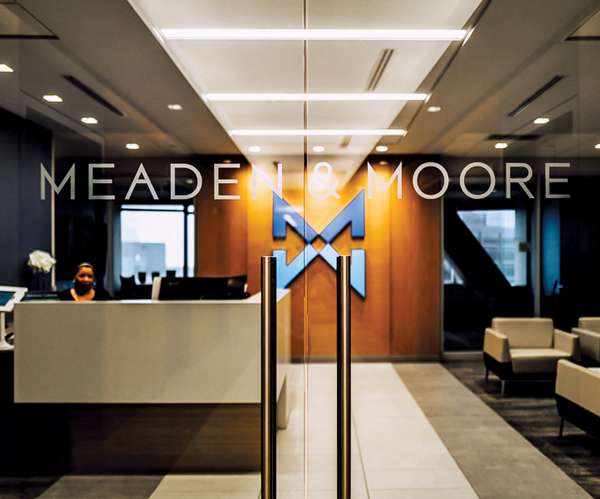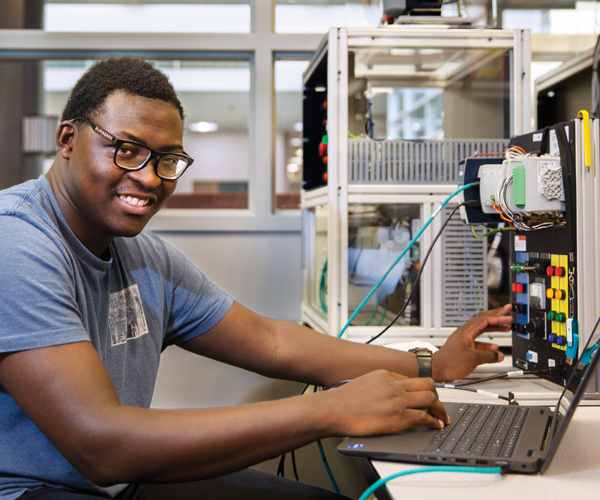Can Cleveland Public Schools Make the Grade?
by Terry Troy | May. 1, 2022 | 4:00 AM
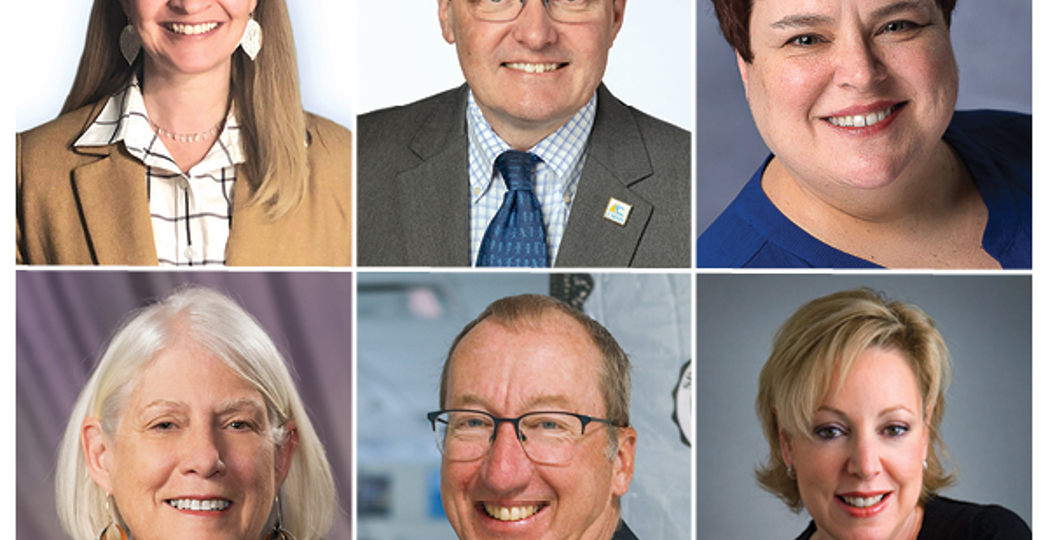
Let’s not sugarcoat it. The professional educators, students and philanthropic community partners of the Cleveland Metropolitan School District (CMSD) would not have it any other way. In terms of the challenges, the last two years were by far and away the worst in the history of our public schools.
Thank you, Mr. COVID.
But, there are bright spots as well. There is optimism that the schools can and will rebound despite the challenges and issues ahead. There are several initiatives that will help with the turnaround. True to Greater Cleveland form, there are plenty of private/public partnerships and philanthropic organizations that are determined to see our schools succeed.
But, how are our schools addressing these issues and using these partnerships?
While it seems as unfair as a pop quiz on the first day of school, let’s give the CMSD some grades, not so much on the performance of its students like the state is apt to do, but rather on CMSD and its performance on the challenges it has faced and will continue to face in the months ahead.
Reaction to COVID-19: B+
By all accounts, no one could have possibly imagined that a global pandemic would impact our society, let alone CMSD. Whether or not the school district was up to the task will eventually be determined by how quickly it can make up the shortfalls in education time and the pressing issues like student, teacher and staff burnout that still need to be addressed.
However, it did respond and was able to stay the course the last two years despite being in the roughest waters that many educators have ever seen.
“The district handled the COVID-19 pandemic as well as possible,” says Meghann Marnecheck, executive director of the Cleveland Transformation Alliance, a community partner of the district that works to make sure every student is engaged in high-quality and equitable education. “Some individuals likely wish things had been different or could have been better.
“Still, throughout several focus group conversations, we have heard that parents and educators felt that the administration handled the situation to the best of its ability. It has been said many times, but unfortunately, no one seemed to be prepared for what we have lived through, so decisions were made based on the best available information and students’ best interests.”
If you look at the data before and after COVID-19, “nationally it has been very tough,” says Lee Friedman, CEO of College Now Greater Cleveland, an organization with a mission to increase postsecondary education attainment through advising, financial aid counseling, scholarship and retention. “Nationwide, kids are not returning to school and kids are not enrolling in schools, which is terrible.
“But Cleveland has actually held its own. Yes, the numbers are worse, but we are actually doing better than our competitive sets in other cities. That’s because we have programs like Say Yes to Education and College Now, as well as philanthropic support from the Cleveland Foundation, the Gund Foundation and many other philanthropic entities. We also had the leadership at CMSD.”
What did our leadership do differently? It started with open communication.
“Was the district well prepared? I don’t think we could ever say that,” admits Eric S. Gordon, superintendent of CMSD. “None of us had ever been through anything like this before.
“What we did at the very beginning was make a commitment to a communication strategy and then take deliberate action on that strategy with bounded optimism.”
Every message sent to the community, whether it was parents, students or educators, had a specific reassuring tone that was followed by deliberate, considered action.
“I have a very talented team here who are deeply committed in all layers of our organization from classrooms and schools all the way up,” Gordon adds. “We would huddle and decide what we were going to say and what we were going to do. But we always included the assurance that everything was going to be okay.”
For instance, if the district decided it was going remote on a certain date, it made sure that it didn’t change, that it followed through on that commitment. The same was true of hybrid learning, or opening classrooms back up.
“When people are in a chaotic situation, the more normalcy you can create, the better,” adds Gordon. “[Our communication policy] created a deliberateness that was the difference between us and what other school districts did.”
Lessons Learned from COVID-19: B-
What we really learned from COVID-19 is to never let it happen again. But, that is probably not the least bit practical.
There is no doubt that the last two years have been miserable, says John Zitzner, president of Friends of Breakthrough Schools, an organization that helps support Cleveland’s public charter schools, a group of kindergarten through eighth grade schools with five campuses and about 3,400 scholars. Breakthrough Schools was formed in partnership with the CMSD to provide students an opportunity for success in life.
Did the schools learn anything from the experience with COVID-19?
“Certainly, we learned about persistence,” says Zitzner. “We learned how to use technology better because we had to go remote. I would say that there is always a silver lining to every cloud. But, if you asked me if we are now better off because of COVID-19, I would say ‘NO!’ We are definitely worse off. The students are quite a bit behind. Now, we have the challenge of catching them up and getting them back on track.
“That doesn’t mean that we didn’t learn some things. It doesn’t mean that technology hasn’t become a bigger part of our overall picture.”
Indeed, Breakthrough Schools was one of the first organizations to pivot toward technology and learning remote. As a part of its response to the pandemic and the shutdown on March 14, 2020, Breakthrough Schools had Chromebooks in the hands of every student and family in its network, as well as home internet access, by April 8, says Zitzner.
“I don’t think anybody did that in the beginning,” he says. “However, we also know that remote learning doesn’t hold a candle to in-person education. While some students are doing okay, most aren’t. While it’s optimistic to say we will make up for lost time, COVID-19 in no way was helpful to our schools. It was brutal.”
Still, out of difficult circumstances, good things often come, especially if you commit to them.
“One of the things that I am most proud of, for my community as well as our students, their families and our educators, is that we made a big commitment early on that we were not going back to normal,” says Gordon. “If we were going through this terrible disruption, we were going to use it to innovate.”
Teachers used technology to get through remote learning, but they also applied technology like Schoology learning management software to create, manage and share assignments. Students became more familiar with the software and learning online. There are other benefits to technology as well.
“When we had our second really bad snowstorm this year, when nearly every one of my peers called for a calamity day, we switched to remote and kept going to school,” Gordon says.
Of course, not everyone enjoyed going to school on what would have been a snow day, “but they will love it when we are not making up school days at the end of the year,” Gordon adds.
Parents are also able to access student devices and schedule video parent/teacher conferences, which makes family contact that much easier.
“If we learned any one thing from the pandemic, it’s that people are now more cognizant that the internet access is as important as electricity or gas, especially in the world that we live in,” says Friedman. “Broadband access should be thought of as a public utility.”
Addressing Education Loss: B
To start with, there is a major difference between education loss and learning loss, according to Gordon.
“The way we respond is a part of how we understand the problem,” he says. “Those who identify the problem as learning loss often think of the child as having a deficit; that we have a broken child we have to fix. So, we use that deficit in our responses. But, if we recognize that there was a loss of learning time, which is education loss, then we respond very differently.”
CMSD has a summer program that is deliberately designed to help students with unfinished learning, says Gordon.
“That is why we are so aggressive about getting our students into it,” he says.
The district has also tried to expand the length of the learning day with additional programming before and after school, as well as out of school tutoring programs.
“We have to take a long view of this because it has been two years. It’s not going to be fixed after school or across a summer,” Gordon says. ‘We have to make sure we stay the course and close those gaps over time. If you have a third grader who is reading at a first-grade level, and you put a third-grade book in front of them, they are not going to close that gap just because you put the book in front of them. But, we do know from our data that they will accelerate and close those gaps over time.”
So, you really have to look at the problem from a philosophical standpoint: The child is not the problem.
“The school has to respond to where the students are and not have the students respond to where the schools are,” says Gordon. “It is also very important to understand that communities of color and poorer communities were impacted incredibly hard. So, we are still going to see big differences between communities like Cleveland and middle to upper income communities that have a lot of other support systems in place around them.”
“I will give Eric Gordon and his entire team tremendous credit for putting together after-school programs, summer learning and other kinds of experiences,” says Friedman. “But, you just can’t make up time. That is very is hard.”
“It will likely take several years to recover from the impact of the COVID-19 pandemic, and the issues associated with that will probably be the biggest challenge for the district and its students in the years to come,” says Marnecheck. “As the Cleveland Plan states, it takes the entire community to support a child through their academic career, and addressing COVID-19’s impact is no different. This will include out-of-school time resources, classroom support and collaborative education efforts where the curriculum is aligned with the district.”
You’ll read more about the Cleveland Plan later.
Addressing Burnout: C+
Teachers are tired. Students are tired. Staff and leadership are tired. If there was one word to describe the personnel not only in CMSD, but also in districts across our state and nation, it would be “exhausted.” And, it’s not just teachers and students, but cooks, bus drivers, dieticians, janitors and all of the support staff who make our schools work.
“We find ourselves today in uncharted territory,” says Shari Obrenski, president of the Cleveland Teachers Union. “The toll that the last few years has taken on our educators is something that we couldn’t have imagined. We thought that the last school year was difficult — and it was. But, in many ways, this school year has been worse.”
In large part, that’s due to the fact that teachers now find themselves in a situation where there is not a consistent supply of substitute teachers — something acknowledged by CMSD.
“What we see all too often is that when a teacher is absent, there isn’t a substitute to take their place,” says Obrenski.
“So teachers are taking portions of another teacher’s class, or even a full class. They are not getting any planning periods or lunch periods, and they are not getting any breaks for anything else.”
Yet, they are still doing evaluations, student testing and the extra work that comes with presenting a lesson plan.
“In short, they are doing all of the things that were required of them under normal circumstances,” says Obrenski. “And, they are exhausted.”
But, Obrenski does not blame the district, nor its leadership.
“I truly believe that the district and our leaders definitely empathize with our members,” she says. “But, there are some things we could have done over the course of this year, which we should do moving forward, to take some of the burden off of our teachers.”
For instance, the first year of the pandemic, when the district was remote, teachers were allowed COVID-19 leave, something that didn’t happen once the schools came back to live learning this year, according to Obrenski.
“We should also cut people some slack, whether it is time for teachers to do their report cards or if there is time for professional development,” she adds. “But, that is hard to do when we have folks who haven’t had planning or lunch periods. Giving people some of that time back would be helpful.”
Looking for way to eliminate some of the burdens of the profession is not a district issue, but a larger issue that runs across the entire education system nationwide.
“It is a larger issue,” says Obrenski. “We need to do more in terms of mental health support, not just for our adults, but for our students as well.
“This is not something the district can do on its own; it’s something that will require a much larger effort not just by the schools, but also the community at large.”
Teacher burnout is being addressed in many ways by the district, but is it enough?
“It is a very real problem,” says Gordon. “This is my 30th year in the field, and it has been the hardest of my professional career — not by a little, but by a long shot. The worst of it was this school year in November, December and January. It was dark, cold and wintry. And, Omicron was raging.”
Much of what the district has done comes in the form of self-care and appreciation of its employees and educators, says Gordon.
“We do a lot internally to say ‘thank you,’ and it goes a long way,” Gordon says.
On a recent National Dietician’s Day, the district used the opportunity to thank all of its dieticians. During a recent National Educator’s Week, the district sent every educator a $25 Grub Hub gift card as a way of thanking its teachers and their families.
“So, there is a lot of effort that goes into messaging our gratitude,” says Gordon. “They are mostly small tokens that are responsible from a taxpayer point of view.”
But, they are kind from an employer point of view.
While there is a crisis in education of staffing challenges and not having enough people, CMSD did a good job of retaining teachers compared to other school districts.
“We only had 82 people notify us that they would not be back teaching next year,” says Gordon. “That compares with the year prior to the shutdown, when 60 or so teachers left. So, there has not been a massive change.”
It also demonstrates that teachers are buying into the superintendent’s vision.
There is some help on the horizon. Knowing that its educators have not had real time off for more than two years, teachers will get some this summer.
“When we went into shutdown, we worked all through the summer creating television programs for our students, mailing packages to homes and even feeding some of our kids,” says Gordon. “But, we can’t do that this summer. We are having a three-week break where we will run camps with the city, libraries and Metroparks. Then, we will have five weeks of our summer programming, followed by another three-week break, which should mitigate some of the burnout problem as well.”
Partnership and Leadership: A+
Every source contacted for this story was quick to give Gordon high marks for his resiliency and leadership during a time of crisis. Teachers also complimented the way the superintendent addressed social issues, like indoctrination in “woke” policies and teaching of critical race theory.
“Of course, my community is 86% people of color, and 100% people who work in a community of color,” says Gordon. “They want the entire history taught. They want all of the literature taught. So, it is not as big of an issue with us.
“School districts do not teach critical race theory. It is a master’s or advanced level degree, a 40-year-old theory that is not something you teach in K-12. It is taught in academia.
“Many people don’t want to talk about the bad parts of history. Well, every country has bad parts to their history, and not just the U.S. If you don’t want to talk about the bad parts of history, you have to take American history and world history out of the curriculum. While you’re at it, if you don’t want to teach the full canon of literature, if you only want to include old white men and not people of color, then you might as well take literature out of the curriculum as well.”
Perhaps most importantly, Gordon has led CMSD by doing a great job of working with its community and philanthropic partners. He will no doubt continue to do so.
Since 2012, CMSD has operated under the Cleveland Plan, a blueprint for education and reform in the city. The plan, developed by the community and written into state law, applies to both district and charter schools and is intended to ensure that every student receives a quality education, regardless of the provider.
The Cleveland Plan is designed to give every neighborhood access to quality schools; shift authority to individual schools; invest in innovative, equitable best practices; ensure accountability through the Cleveland Transformation Alliance; and embed organizational and educational principles that are able to be replicated and measured for all public district and charter schools.
CMSD also has partnered with philanthropic, nonprofit workforce development organizations and employers to launch the Planning and Career Exploration (PACE) curriculum. PACE begins with career awareness and exploration at an early age, then provides guidance and workplace experiences to every student to develop a pathway to living-wage, in-demand jobs.
CMSD and the community started Say Yes to Education Cleveland in 2019 for those students who choose to go on to postsecondary education after graduating from high school. Say Yes provides scholarships that pay up to the full value of tuition, minus federal and state aid, to all public colleges, universities and Pell-eligible training programs in Ohio and more than 100 private colleges and universities across the country. To qualify, students must be continuously enrolled in a district or eligible charter high school and live in the city of Cleveland or district from ninth grade until graduation.
“We have been a long-time partner in both the development and implementation of Say Yes to Education,” says Helen Williams, program director for Education for the Cleveland Foundation. “We also participate on the scholarship board and manage the scholarship fund for Say Yes to Education.”
The Cleveland Foundation supports Say Yes to phase in wraparound services for students and families in all CMSD and partnering charter schools.
The Cleveland Foundation also was a co-convener of the planning process that resulted in the development of PACE, described above, and most recently the launch of the Greater Cleveland Career Consortium, which is designed to support the implementation of PACE in CMSD and the expansion of robust career exploration and planning programs in other school districts.
“CMSD is unique in its ability to collaborate with the community in standing up large-scale strategies like Say Yes and PACE that are laser focused in improving the future of Cleveland’s children,” says Williams.
This collaboration makes CMSD an engine for workforce development.
“There will be short term wins,” says Gordon. “But as we build this out, it should be very exciting. I don’t know of anything this comprehensive in the nation.”
But Gordon is also a realist.
There are social determinants that are still prohibiting CMSD from realizing each student’s full potential. These include poverty, hunger and digital connectivity.
“We still have the highest childhood poverty rate in the nation, and the worst digital connectivity in the country,” says Gordon. “We are also the ninth most racially segregated city in the country. We have had a 30 percentage point gain in graduation rates despite the fact that those social determinants have not changed.”
The No. 2 issue during the recent mayoral campaign was “Have the schools improved enough?”
“I suppose that is good news because it might have been, ‘Have the school improved at all?’” Gordon says. “We have improved, but not enough.”
And, we will likely never realize long-term educational goals until those underlying sociological issues and determinants are addressed communitywide.
Trending
-
1
-
2
-
3
-
4
-
5


